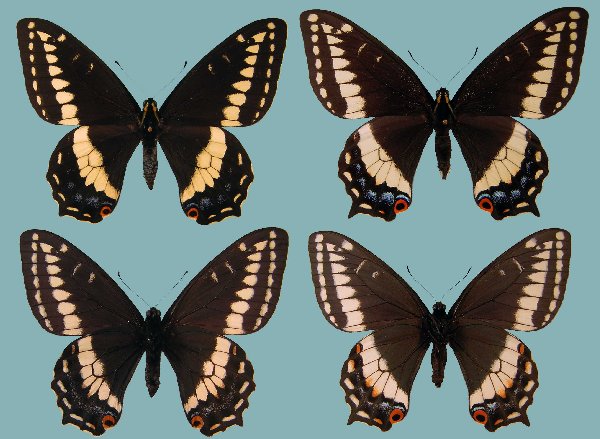Papilio indra indra

Photo Life History: Papilio indra indra
Habitat: Mountain Canyons; Mountain Hilltops
Host Plants: Lomatium grayi grayi; Lomatium graveolens; Cymopterus terebinthinus calcareus; Aletes acualis
Suitable Lab Host Plants: Tauschia arguta; Cymopterus terebinthinus petraeus; Lomatium parryi
Caring for Live Female Butterflies: Feed females regularly.
Methods of Female Oviposition: Open Screen Cages; This brief video shows a female indra laying an egg in an open screen cage. Placing host between rocks in a cage seems to help.
How to Find Eggs: Eggs on Peripheral Stalks; Seek out host plants that are exceptionally healthier than other sun-scorched plants within a population. This can equate to plants situated between rocks. Females from Francis Peak and Bountiful Peak, Utah tend to oviposit on the same plants year after year, making it easier to find immatures. Females will also oviposit on Lomatium graveolens plants growing on cliff faces when those plants are sufficiently succulent. (They don't necessarily need to be situated between rocks in these populations.)
How to Hatch Eggs: Consolidate eggs into one container
How to Find Caterpillars in the Field: Once you understand where Papilio indra females prefer to lay eggs, the key to finding caterpillars has a lot to do with understanding and recognizing the progressional change in caterpillar feeding damage and resting preferences as caterpillars progress through its instars.
Caterpillar Feeding Damage: See this slide show. Look for unique first instar skeletonizing chew marks on stalks where eggs are likely to have been laid. Third instars rest at the base of the plant whereas late instar larvae "strip down" the host plant leaves; but leave the central stalk in tact.
Caterpillar Resting Positions: See this slide show. First instar indra larvae rest up-side-down on the stalks of its host plant. Third instar larvae tend to move away from the periphery of the host plant to rest at its base. Fourth and fifth instars rest at the base of the host or off the host altogether.
Caterpillar setups: For first through fourth instars, I recommend using the Open terrariums or Open Bucket technique. If you're only rearing a few fifth instar caterpillars, I recommend using a Closed Container--Papilio indra. For more information, please see this video to see why I recommend using a closed container for later instars. (I'm not very popular with this suggestion; but it has worked well for me.)
Larva to Pupa: Larva purges and wanders.
Number of Broods per Year: 1; (some high elevation populations can have semi-protracted emergences if host plants are buried under unequally deep snow banks; i.e, cliffs that are east vs. west facing, etc.)
Overwintering Stage: Pupa.
Overwintering Strategies: Your Own Backyard; Refrigerator
Post-Hibernation Strategies: Expose Pupae to warmer temperatures; Long-Day Photoperiod; and High Humidity. (Mist spray regularly)
Avoiding Diapause Techniques: Not applicable.
Disease Prevention: Critical for P. indra! Some information is provided in Utah Lepidopterist.
Emergence: Emergence Container
Field Notes: Populations from Cache County, Utah, feed on Cymopterus terebinthinus calcareus; which grows right in the canyon floors creating an earlier flight of this butterfly as compared to hilltopping populations. Dr. Wayne Whaley has done extensive research on the entire Papilio indra complex. Click here for more information on the nominotypical race of Papilio indra from Wayne's site. Click here for more information from the Utah Lepidopterists' Society website.

